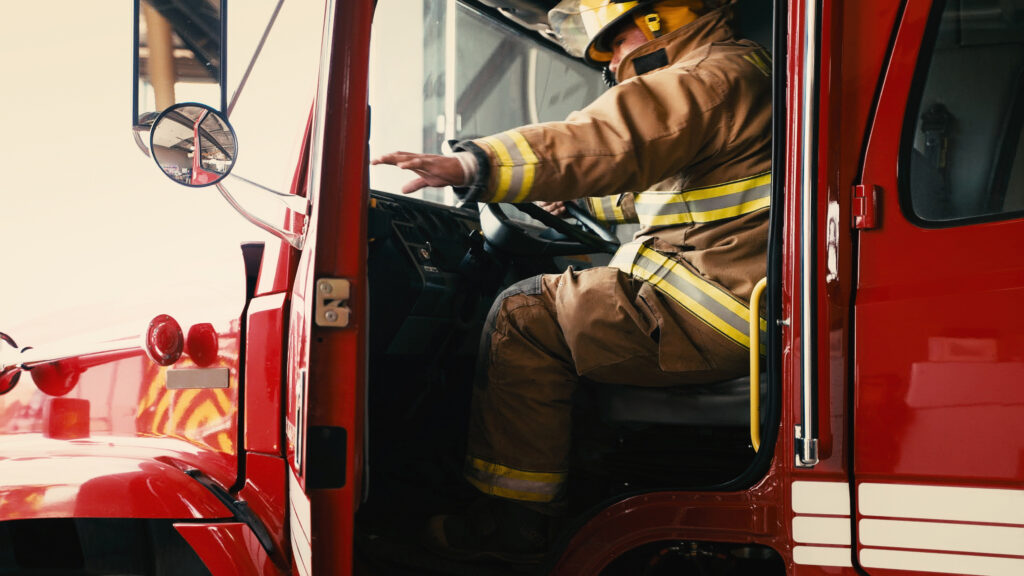Firefighters must frequently use PFAS-containing turnout gear to ensure protection from fire incidents. (Getty Images)
Firefighters employ rigorous preventive measures to limit contact with hazardous substances during fire emergencies. Yet, avoiding toxic exposure becomes nearly impossible when the equipment to keep them safe contains potentially carcinogenic compounds. Per- and polyfluoroalkyl substances (PFAS) are synthetic compounds whose toxicity is an emerging public health concern due to widespread use in firefighting gears and foams. Despite their risks, PFAS’ physical properties make them difficult to replace.
PFAS’ persistent perils
These forever chemicals comprise over 14,700 carbon-fluorine compounds with a stable molecular makeup. They can withstand high temperatures, are water and oil-repellent, non-stick, and can act as surfactants. PFAS has been used in commercial products and industrial applications since the 1950s. PFOA and PFOS were the active ingredients of aqueous film-forming foam (AFFF), which gained fame between the 1960s and 1970s. As asbestos’ carcinogenic effects became apparent, PFAS types like PTFE were considered safe substitutes for firefighting gear.
Companies that produce and sell PFAS, like 3M and DuPont de Nemours, must be transparent about the compounds’ potential health effects. They disingenuously withheld vital information from federal authorities and the public for decades. Several independent research studies found that PFAS are persistent environmental contaminants that accumulate in human tissues and blood. Prolonged exposure is associated with multiple health conditions, including increased testicular and kidney cancer risks, cholesterol and liver enzyme shifts, decreased vaccine effectiveness in children, low birth weight, and hypertension in pregnant women.
‘Forever chemicals’ in firefighter’s protective equipment
Firefighters are exposed to a range of occupational hazards, which can lead to higher cancer rates and deaths. Researchers evaluated firefighters’ PFAS exposure risks considering the compounds’ potential association with oncological afflictions. One of the most concerning findings was the presence of PFAS in personal protective equipment. PFAS have been used in the layers of turnout gear since 1976. Recently, studies have found that firefighting textiles contain PFAS. It represents another PFAS exposure pathway, primarily through dermal exposure. As PFAS layers in turnout gear wear down, these compounds infiltrate from external layers to the thermal barrier closest to the skin.
A National Institute of Standards and Technology study analyzed 20 firefighter fabrics. They identified 26 types of PFAS in all protective layers, mainly in the outer shells and the moisture barriers treated with water-repellent PFAS coatings. Firefighters’ PFAS blood levels are higher than the general population due to their cumulative exposure to AFFF, residual PFAS particulate matter from emergency sites, and hazardous protective equipment.
PFAS exposure risks in West Virginia’s firefighters
The West Virginia State Fire Marshal’s Office, Fire Department Services Division, oversees the state’s fire departments. It manages fire and non-fire data collected from the National Fire Incident Reporting System (NFIRS), fire department training and evaluation, and issuance of emergency vehicle permits. Currently, 401 fire departments are registered with the National Fire Department Registry. Firefighters comprise 90.7% volunteers and 3.3% career firefighters. Right now, 8.2% account for fires from the total fire department responses, which is 2.1 times higher than the national average.
Firefighters have increased exposure to AFFF and must frequently use PFAS-containing turnout gear to ensure protection from fire incidents. House Bill 3189 amends the 1931 Code of West Virginia, adding a specific clause for identifying PFAS sources. The act acknowledges that “defense equipment” is also a PFAS source. While already in effect, the state will also receive $18.9 million in federal funding over two years to address emerging contaminants, including PFAS. The removal of PFAS efforts is mainly focused on detection and environmental cleanup, and it is evident that firefighters’ turnout gear needs safer alternatives.
The PFAS alternatives act: A legislative effort to replace PFAS
According to the International Association of Fire Fighters, every turnout gear available on the market contains PFAS, with only one durable, water-resistant coating being independently verified as fluorine-free. Although independent research for replacements is underway, a recent proposed legislation aims to innovate and develop safer alternatives.
The PFAS Alternatives Act provides funding to expedite research, development, and testing of PFAS-free materials for next-generation firefighting equipment and other purposes. It addresses broader issues, including better protection against primary and secondary exposure to combustion byproducts and particulate, reduced maintenance and ease of cleaning, visual indicators of toxic contamination alerting firefighters, and body composition in protective equipment design.
Furthermore, the bill would also fund best practices training to help firefighters mitigate exposure risks and handle next-gen gear. Eligible grant applicants must involve experts in the firefighting industry and fire service professionals, leveraging their hands-on experience for valuable guidance.
GET THE MORNING HEADLINES DELIVERED TO YOUR INBOX

